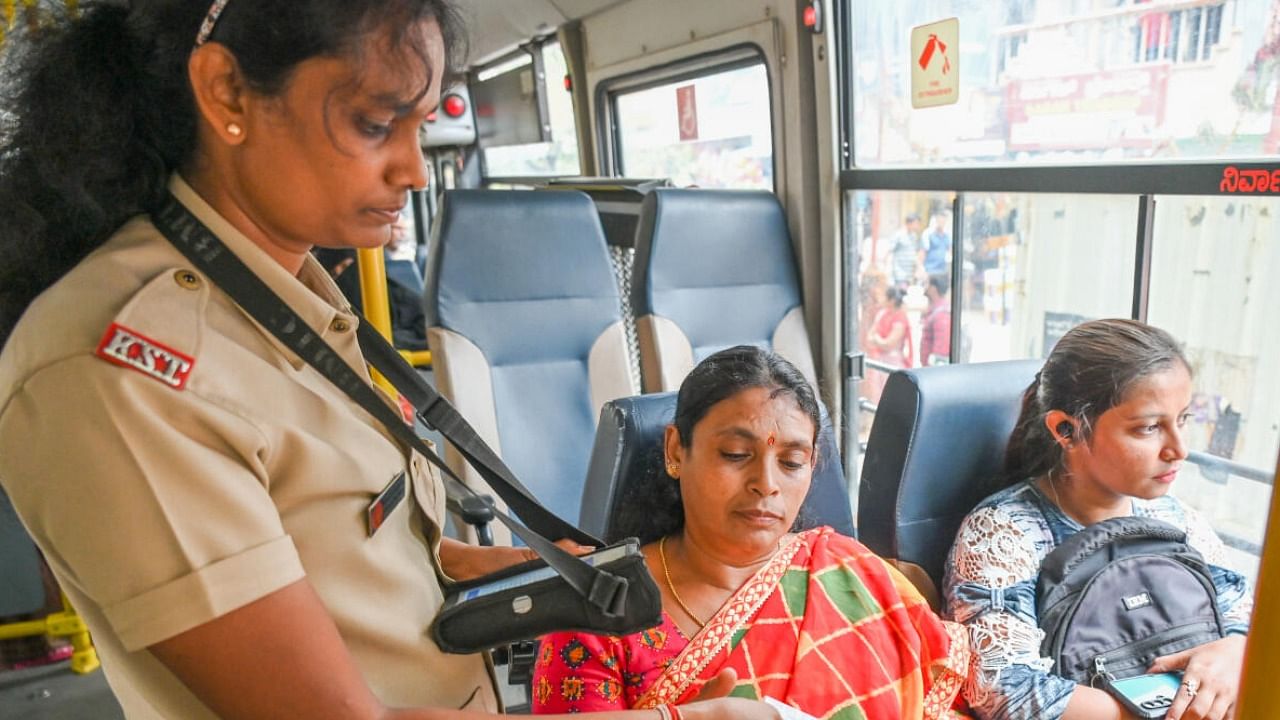
The Karnataka Government implemented the Shakti Scheme on June 11, 2023, which offers free travel for women in state-run road transport corporations (RTCs). While this move is commendable, there are certain flaws in the guidelines that need to be addressed.
Over 40 lakh women in Karnataka use public transport each year, and this number is expected to increase by 10% due to the free travel scheme. The initiative covers 94% of buses under the four RTCs and will cost the state exchequer Rs 4,700 crore annually. It is imperative to point out that free travel enables the social and economic participation of women, especially from marginalised and disadvantaged communities, and helps them reclaim public spaces.
If trends in Delhi and Tamil Nadu are anything to go by, the government’s decision to implement free travel for women in Karnataka can open new opportunities for women by offsetting travel costs, which often amount to a substantial portion of the income of working women, improving their financial independence, and freeing up money to save it or spend it on other utilities. The Tamil Nadu Planning Commission’s report highlighted some of these benefits, including a higher disposable income, higher work participation, reduced dependence on family members for their mobility, and fostering new opportunities for social networks and learning. In this context, it is important to emphasise that free travel should
mean free, not “free, but conditions apply.”
Since the introduction of free bus travel for women in 2019, female ridership in Delhi has increased from 25% in 2020–21 to 33% in 2022–23. Similarly, after just one year of introducing it in Tamil Nadu, female ridership increased from 40% to 61%. However, neither Delhi nor Tamil Nadu restrict the scheme to only benefit the residents of the state or UT.
The schemes provide universal coverage to all women travellers without any restriction based on their residential status. Contrarily, the free bus travel scheme for women in Karnataka is clearly geared towards excluding women who are seasonal workers, migrant workers, and women whose IDs do not yet reflect a registered address in Karnataka. This calls into question whether the objective of the scheme is really to empower women and help them reclaim public spaces when it is blatantly excluding some of
the most vulnerable and marginalised women from availing of the services.
Also Read | Karnataka's Shakti scheme offering free ride in govt buses for women costs Rs 8.84 crore on single day
For a city like Bengaluru, where nearly half the population comprises inter-state and inter-district migrant labourers and professionals, the scheme will effectively leave out a substantial number of women from availing of free bus travel. A study conducted by the Council for Social Development for the Karnataka Evaluation Authority and Department of Labour, Karnataka, found that less than 50% of the sample migrants earned less than Rs 6,000 per month. In fact, the pandemic exposed the plight of migrant workers in Bengaluru, which brings us back to the question: how can this scheme blatantly exclude some of the most disadvantaged women from availing of free bus travel?
Another serious concern with the scheme is the exclusion it may cause due to the digital application process. As per the scheme guidelines, the transport department will issue ‘Shakti Smart Cards’ after receiving applications from women through the Seva Sindhu Portal. An online application process can exclude disadvantaged and marginalised women due to the complex nature of the process. As opposed to opening opportunities for women, the digital application process for smart cards excludes them from availing themselves of the benefits of the scheme. Neither do all women have access to digital devices and the internet, nor does everyone possess the requisite digital literacy skills to be able to navigate and apply solely through a digital application process.
In fact, unless the government intends to set up a vast network of physical kiosks that facilitate the application process, coupled with an effective state-wide door-to-door campaign to enrol all women, the scheme may leave out some of the most disadvantaged women. In contrast, in both Delhi and Tamil Nadu, women travellers are issued distinct free-of-cost tickets without the need to be registered anywhere.
While implementation of the scheme is at one end of the spectrum, it is imperative that the government regularly monitor its implementation and conduct periodic studies on the impact of the scheme. Such studies can also aim to better understand travel patterns, which can inform any decisions undertaken to make the cities more sustainable, comfortable, and safe for women. The scheme only reinforces the responsibility of the government to carry out its responsibilities better, as demand will increase, necessitating that more buses are brought in, more manpower is pooled in, and funding supports the scheme. Ultimately, even though free bus travel will bring more women onto public transport, hopefully one day women will also feel safe in public spaces.
(The writer is a senior resident fellow at the Vidhi Centre for Legal Policy.)